- Information
- Detailed Itinerary
- Gallery
- Reviews
- Similar Tours
- Fitness
What's included
- Arrival airport pick up and Departure transfers on both domestic and international flights
- Accommodation 2-3 stars Hotel in Kathmandu and Pokhara on twin share bed with B/B plan
- According to CHOICE of menu 3 times meal B/F, Lunch & Dinner with 2 cups of tea or coffee in breakfast and every meals a cup of while the trekking
- Responsible trekking policy of two Trekkers: One porter.
- Accommodations at clean and comfortable local Tea House / Lodge during the trek
- English speaking guided half day city tour with world heritage sites
- All domestic flight, Airport taxes, private transportations starting & ending points of trek
- English Speaking Experience local Mountain Guides – by Himalayan Trails trained and Nepal government licensed holder as well as First Aid Eco trained, along the trek basic complete First Aid Kits
- Assistants Guide and other support staff if indeed
- Annapurna Trekking Map
- Insurance of all staffs Guide, Assistants, Porters, Accommodations, food and reasonable salary during the treks
- All necessary officials pepper work
- TIMS and Annapurna Conservation Fee (ACAP)
- Warm clothing and required trekking gear for porters
- Travel and Rescue arrangements
- All the Government VATs & Taxes
- Welcome and Farewell dinner as per itinerary
- Nepal entry Visa fees (US$ 50 per person for 30 days)
- International Airfare
- Your Travel Insurance
- Lunch, Dinner & Drinks in the cities.
- Any kind of drinks & personal expenses on trek
- Hot shower, Electricity Bills during trek
- Personal gear & clothing
- Medical evacuation encase of Emergency
- Tips and Items of a personal nature like postage and laundry
- Expenses deserve due to Natural or manmade hazards like landslide, strikes, political unrest etc. will be charge extra as per actual and anything not specify on the cost above.
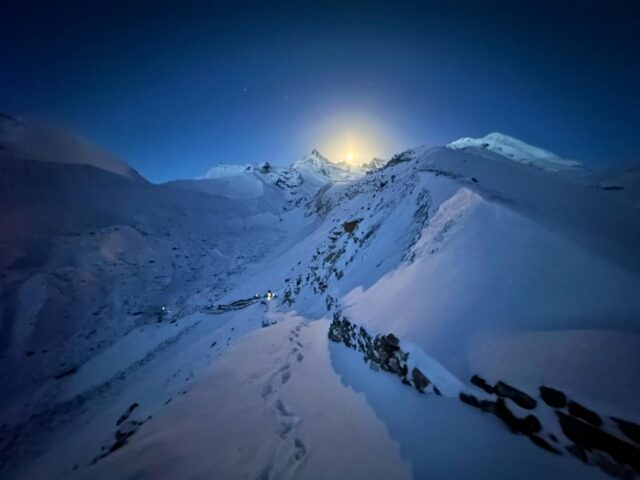
Overview
Annapurna Circuit Trek
It would not be an exaggeration to say that the Annapurna Circuit trek is one of the sought-after trekking journeys in Nepal. The trek takes you deep into the Annapurna region, and as a matter of fact, the trip is the best way to explore the area. Annapurna Circuit trek amalgamates the crucial natural and cultural attributes of the hills of Nepal into a single journey. It is for this reason that the trek is one of the most popular ones in Nepal. If you’re someone who loves exploring unique cultural and natural spectacles, with an added challenge, this is the right trip for you.
Annapurna Circuit Trek
On the Annapurna Circuit trek, you get to click some of the best Annapurna pictures, as you’ll be rewarded with amazing mountain views throughout the journey. Some of them are Mount Annapurna, Mount Nilgiri, Mount Machapuchhre, and so many others. Another crucial attraction of the trek is the Mustang Village, especially the ones like Jomsom and Kagbeni. Apart from this, you will also get to visit Muktinath, which is a significant religious site in Mustang District, significant for both Hindus and Buddhists.
Annapurna Circuit trek is a 22-day-long journey, and during this time, you cover places such as Manang, Dharapani, Marpha, and many others. By extending your trip for a couple of days, you also get to explore Tilicho Lake, which is one of the highest lakes in Nepal. One of the most challenging points of the trek is Thorung La. It is a high-altitude mountain pass situated at an elevation of 5416 m. The valley of Nar–Phu is a deserving side trek to try out.
Annapurna Circuit Trek Difficulty
Considering the length of the journey, the high-altitude places that the trip forces you to cover. Also, a few other features, the Annapurna Circuit trek difficulty level can be marked as challenging. It is for this very reason that the trip is recommended only to experienced trekkers. If you’re someone who’s never trekked in his life, well, it is advised that you try other easier treks in this region first, like Ghorepani Poon Hill Trek, before going for this one. Not just experienced, you also need to be in quite good physical condition to go on this trek.
Annapurna Circuit Trek Map
The Annapurna Circuit trek map can prove to be one of the most helpful tools during the Annapurna Circuit trek. The map gives you all the information that you need to have way before your journey. It tells you about the exact location of all the attractions and also the challenges. The map doesn’t just help you prepare for the trip, but also helps you decide whether the journey is meant for you or not. It is for the same reason that the trekkers tend to get their hands on the map way ahead of their trip. A map also makes you independent and is ideal for solo trekkers.
Annapurna Circuit Trek Guide
When you go for the Annapurna Circuit trek, it’s mandatory to be accompanied by an Annapurna Circuit trek guide. It is a rule enforced by the Nepal Government, considering the safety of the tourists in mind. A lot of trekkers might feel that they don’t need a guide to accompany them during a trekking journey, but keep in mind that he doesn’t just show you the right way, but also helps you understand the local cultures. Trekking in Nepal is easier with a guide beside you at all times. A guide also motivates you when you feel like giving up.
Annapurna Circuit Trek Cost
Annapurna Circuit Trek Costs can range between $1700 and $2500 per person. The difference in the cost is mainly the result of the level of luxury offered to the tourists during the trekking journey. Also, when you choose a local travel agency to organize the trip for you, rather than an international one, you tend to pay much less for similar services. It is recommended that you choose an affordable package, offered by a local agency, preferably. Their services adhere to your personal needs, and also, you also help support the local economy.
Best Time to Hike the Annapurna Circuit
The best time to hike the Annapurna Circuit is between September and November. During this time of the year, the Annapurna Circuit weather is at its best, neither too hot nor too cold. Also, the skies are quite clear, allowing you to enjoy the most amazing mountain views. This is also the most popular season for the Annapurna Circuit Trek. So you’ll have to experience quite a large crowd on the route and in the settlement areas. In the same way, the second-best time to hike the Annapurna Circuit is between March and May.
You will have the best travel experience in Nepal, on the Annapurna Circuit Trek route, if your journey is planned well. The attractions mentioned above only constitute the tip of an iceberg known as the Annapurna region. You can explore so many other attractions provided that you have the required time and energy. A properly planned trip, covering not just the spectacles of the main route but also the side ones, will allow you to experience the region in its truest form. You should try the Annapurna Circuit trek if you’re a trekking enthusiast and a nature lover.
Most reliable and affordable Travel
Himalayan Trails Trekking is one of the most reliable and affordable travel and tour operators in Nepal. They specialize in trekking and expeditions; however, keeping the needs of the tourists in mind, they also offer luxury tour options featuring activities such as food and cultural tours, jungle safari, helicopter tours, adventure sports, and many others. Their itineraries feature exciting tourist destinations in countries like Nepal, Bhutan, and Tibet. What makes them stand apart from their counterparts is their focus on client satisfaction. If you’re looking to have a great time in these places by trying out these activities, contact Himalayan Trails Trekking today.
Short Itinerary
- Day 01: KTM arrival is picked up from the airport and welcomed with a garland. And transferred to the hotel, trek briefing, and welcome dinner.
O/N Hotel DBB - Day 02: Sightseeing world heritage sights, Hindu & Buddhist shrines / Trek preparation
O/N Hotel B/B - Day 03: Kathmandu – Besisahar drive (823m) 6hrs Via Jagat, Dharapani, or Chame on your request!
O/N lodge – BLD - Day 04: Dharapani – Chame (2,550m) 6hrs
O/N lodge – BLD - Day 05: Chame – Pisang (3,030m) 5hrs
O/N lodge – BLD - Day 06: Pisang – Manang (3,440m) 4hrs
O/N lodge – BLD - Day 07: Manang – Explore Acclimatization
O/N lodge – BLD - Day 08: Manang –Tilicho Base Camp (4,150m) 6hrs
O/N lodge – BLD - Day 09: Base Camp – Tilicho Lake & trek down to Shree Kharka (3,900m) 6hrs
O/N lodge – BLD - Day 10: Shree Kharka –Yak Kharka (4,020) 4hrs
O/N lodge – BLD - Day 11: Yak Kharka – Thorung Phedi (4,450m) 4hrs
O/N lodge – BLD - Day 12: Thorung Phedi – Thorung – La (5,416m) – Muktinath (3,802m) 7hrs
O/N lodge – BLD - Day 13: Muktinath – Marpha/Jomsom (2,670m) 6hrs
O/N lodge – BLD - Day 14: Marpha – Kalopani (2,530m) 7hrs or on this day can fly to Pokhara
O/N lodge – BLD - Day 15: Kalopani – Tatopani (1,190m) 6hrs
O/N lodge – BLD - Day 16: Tatopani – Ghorepani (2,855m) 7hrs
O/N lodge – BLD - Day 17: Ghorepani – Pokhara via Birethanti (800m) 7/8 hrs
O/N lodge – BLD - Day 18: Pokhara – Kathmandu Fly 30 minutes or Drive 7hrs
O/N Hotel – B/B - Day 19: Free day and shopping, Farewell dinner
O/N Hotel -BBD - Day 20: Final departure gets back to home, Share experience with family unforgettable memory of the Annapurna Circuit Trek
Important Note
The above itinerary is a guideline and a standard outline we advise to help you plan your trip. We can modify and offer tailor-made trips according to your requirements and availability within the time frame before the trip is booked. But when a trip starts, your Leader or guide is only legally responsible for changing itineraries to foremost group’s interest.
- Day 1
- Day 2
- Day 3
- Day 4
- Day 5
- Day 6
- Day 7
- Day 8
- Day 9
- Day 10
- Day 11
- Day 12
- Day 13
- Day 14
- Day 15
- Day 16
- Day 17
- Day 18
- Day 19
- Day 20
- Day 21
- Day 22
KTM Arrival pick up from Airport and welcoming by garland and transfer to Hotel, trek briefing and welcome dinner. O/N Hotel DBB
On your arrival day in Kathmandu, You will be received by the representative staff from Himalayan Trails Trekking & Climbing P Ltd with proper greeting. When you have had your time to settle in and freshen up. In the afternoon, you will visit our office there will be short trip briefing and introduction with your trekking guide. In the evening, there will be a welcome dinner hosted by Himalayan Trails Trekking & Climbing. For dinner, you will be served excellent cuisine.
Overnight at Hotel –BDB
Sightseeing world heritage sights Hindus & Buddhist shrines / Trek preparation O/N Hotel B/B
The very next morning, after breakfast you will leave for a full day sightseeing tour around Kathmandu valley. Some of these landmarks are considered World Heritage Sites including the historic Durbar Square, the sacred Hindu temple of Pashupatinath, the famous ‘Monkey Temple’ (Swayambhunath) and Buddhist shrine (Bouddhanath) which is one of the largest stupas in the world. After city tour you can hang out to the necessary places you might need to go before trekking like, Money changer, ATM, Market ETC.
Overnight at Hotel –B/B
Kathmandu – Besisahar drive (823m) 6hrs Via Jagat, Dharapani or Chame on your request. O/ N lodge – BLD
From Kathmandu, we start early to drive to Besishar which is the starting point for Annapurna circuit trek (depending on your choice you can start your trek from jagat, dharapani or Chame.) The road up to Besisahar is quite good, the journey take through deep gorges as you trace the Trisuli River westwards and will pass through the small town of Mugling where the Trisuli and Marshyangdi rivers meet. Then, drive through gravel road covering around 30 kms slowly gaining elevation, getting good view of Bouddha Himal (6736 m) and Himalchuli (7968 m) and to Besisahar (823 m).
Overnight at lodge -BLD
Besi Sahar – Bahundanda trek (1,398m) 6hrs O/ N lodge – BLD
After Breakfast, trail continues northwards up the valley, crossing several suspension bridges and passing several beautiful waterfalls. Above us, we can see the peaks of Lamjung (6859 M). The village bahundanda supports the last shops of any size before Jomsom.
Overnight at lodge -BLD
Bahundanda – Tal (1,680m) 6hrs O/ N lodge – BLD
After breakfast, the trail continues towards Tal a beautiful village having waterfall at the end of the village is situated on a flat land at the border of Lamjung and Manang districts. As you head upstream, you will begin to notice the changes in the people as well as the land, architecture and culture. You notice that there is a concentration of people of Tibetan origin, their houses are built of rock, the vegetation is less tropical and the culture is predominantly Tibetan.
Overnight at lodge -BLD
Tal – Bagarchap (2,080m) 5hrs O/ N lodge – BLD
After breakfast, the trail from Tal crosses the Marsyangdi Khola to its West Bank after the village of Karte and continues towards the village of Dharapani. From Dharapani you continue up the river valley past the Gurung village of Thonje to the village of Bagarchap. Bagarchap means Butcher’s place.
Overnight at lodge -BLD
Bagarchap – Chame (2,550m) 6hrs O/ N lodge – BLD
After Breakfast , the trail continue along the left bank, climb up the heavily wooded Manang Valley past small settlements with excellent views of Manaslu and the peaks above Larkya La. Lodge at the village of Chame, administrative headquarters of the region and the last major market before Jomosom.
Overnight at lodge -BLD
Chame – Pisang (3,030m) 5hrs O/ N lodge – BLD
After breakfast, the trail passes through pine forests, over fairly level ground, through the village of Taleku to Bhratang. Like all vilages since Dharapani these predominantly Buddhist villages have an entrance chorten and an exit chorten. Annapurna II can be seen to the south and you are now behind the main Himalaya peaks in their rain shadow area. After crossing a series of woodden cantilever bridges you enter a spruce and fir forest that eventually gives way to a pine forest. After days in the gorge the forests provide a welcome change. Crossing the river to its left bank you reach your lodge at the village of Pisang.
Overnight at lodge -BLD
Pisang – Manang (3,440m) 4hrs O/ N lodge – BLD
After breakfast, the trail continues throughout the upper part of the Manang District where the Tibetan/Buddhist influence can be seen throughout. People in this region herd yaks and raise crops such as maize. Leaving Pisang, there are two options that follow the Marsyangdi River both of which meet up again in the village of Mungji and Braga, with its beautiful monastery – the southern route or the northern route. The southern route involves a gentle climb following alongside the river. The northern route is a bit more demanding and strenuous, climbing up the north ridge of the valley. The views along the upper northern route of the Annapurna’s are stunning.
Overnight at lodge -BLD
Manang – Explore Acclimatization O/ N lodge – BLD
Today is a rest and acclimatization day. Manang is a fascinating village, the chief Buddhist village that gives its name to the area. As such it’s ideal for our essential acclimatization rest day before taking on the Thorong La. There are excellent side trips such as the short climb to the Cliffside Bod-zo Gompa where the lama performs a blessing ceremony to protect us on our journey. Bhojo Gompa or Gangapurna Lake is worth visiting sites from acclimatization point of view. An easy excursion to a little distance away to a village called Vraga, a small old village with a monastery is also possible.
Overnight at lodge -BLD
Manang – Yak Kharka (4,130m) 4hrs O/ N lodge – BLD
After breakfast we head towards the base of the Thorung La. Climbing out of the Marsyangdi Valley, following instead, the Jarsang Khola. Here we are far above the pine and fir forests and are truly immersed in the beauty of the high Himalaya. Taking it slowly as we reach Yak Kharka where yak herders bring their animals to graze.
Overnight at lodge -BLD
Yak Kharka – Thorung Phedi (4,450m) 4hrs O/ N lodge – BLD
After Breakfast the trail Continue through pastures, which eventually give way to high arid desert at Phedi, at the base of Thorung La.
Overnight at lodge -BLD
Thorung Phedi – Thorung - La (5,416m) – Muktinath (3,802m) 7 hrs O/ N lodge – BLD
After breakfast From Phedi ascend to a notch and turning left head for the Thorung La. A chain of rocks marks the pass, which might not be visible if there is snow. Beyond the pass you enter the river valley of the Kali Gandaki River. The descent is long, starting gently, but increasing in steepness, following a series of switchbacks leading to the grassy slopes and holy town of Muktinath (3800m). Muktinath is surrounded by rugged mountain landscapes and with unparalleled views of Dhaulagiri (8167m), the world’s 7th highest mountain.
Overnight at lodge -BLD
Muktinath – Marpha (2,670m) 6hrs O/ N lodge – BLD
After breakfast , Trek back from Multinath through trail via Kali Gandaki valley then trek to Marpha 6 hours walking to Marpha village. This town is famous for Apple; don’t miss to eat Apple Pia and Apple Juice.
Overnight at lodge –BLD
Marpha – Kalopani (2,530m) 7hrs O/ N lodge – BLD
After breakfast, Trek down to Kalopani 6 hours walking through Kali Gandaki Valley .During the trek passes apple orchards along with picturesque mountain sceneries. Some major peaks are Annapurna I, Dhaulagiri, Tukche Peak, three Nilgiris, and Fang.
Overnight at lodge -BLD
Kalopani – Tatopani (1,190m) 6hrs O/ N lodge – BLD
After breakfast, the trail follows the river through a narrow gorge, and descends to cross a bridge near a spectacular waterfall, before winding through the valley to Tatopani. The hot water springs that give the village its name provide the perfect opportunity for a good ‘scrub.
Overnight at lodge -BLD
Tatopani – Ghorepani (2,855m) 7hrs O/ N lodge – BLD
After breakfast, the trail follows crossing the Kali Gandaki River we slowly climb steeply up the village of Sikha, which is inhabited by Magars. From Sikha along the path that leads to the Rhodendrons forest and you can see the Annapurna South, hidden by a ridge smiling at you. We will walk past the villages of Banthanti and Nangathanti through the forest to reach Ghorepani. Ghorepani is a settlement of Poon Magars.
Overnight at lodge -BLD
Ghorepani – Ghandrung (2012m) Via Tadapani (2590m) 7/8 hrs O/ N lodge – BLD
Early in the morning we hike up 45 minutes to Poon Hill for sunrise. Poon Hill is one of the best places to view Sunrise in Nepal. From there we can see Marvelous view of Annapurna ranges, Dhaulagiri ranges, Nilgiri, Fishtail. After taking good time in Poon Hill returm back d to the Ghorepani for breakfast then trek to Tadapani 4/5 hours through Nice jungle walk.
Overnight at lodge -BLD
Ghandrung – Nayapul (1,070m) 4hrs trek and drive to Pokhara (8,90m) 1hr O/ N Hotel -BLD
After breakfast, Trek Back to Pokhara 5 hours walking descends to Nayapul via Ulleri, Birethanti and drive to Pokhara. Stay in hotel.
Overnight at Hotel -BLD
Pokhara – Kathmandu Fly 30minets or Drives 7hrs O/ N Hotel – B/B
After Breakfast, transfer to airport and fly back to Kathmandu or you can also return back via Tourist bus.
Overnight at Hotel (B B)
Free day and shopping Farewell dinner O/ N Hotel -BBD
You are free to spend the day at your leisure to relax, refresh, and perhaps take a trip to explore more of the city, before the group’s final evening celebrating huge achievement with a special dinner. Around the evening, we will take you for a farewell dinner. While having dinner, we will also discuss your trip and take feedback.
Overnight Hotel (B/DB)
Final departure gets back to home, Share experience with family unforgettable memory of Annapurna circuit Trek
One of our company representatives will assist you to get to the airport by privet vehicle as per your flight departure time and back to home share experiences with family and friends unforgettable memory of Annapurna Circuit Trek.
Train And Fitness
Physical fitness is one of the most key elements on the trek. The trekking in the Himalayan is not forced on it and pacing is always slow, most of the days generally being shorter than a hiking day at your home country. We believe that should be you’re imaginable of its kind of holiday trip literally than a contest to provide evidence of the travelers. We maintain situated so as to allow easy access to your trip can be demanding but not a difficult. You can make your own speed and enjoy your trip stunning atmosphere rather than following to other to catch. Himalayan Trails, recommend that you assume on a good fitness agenda proceeding to your trip although and one that builds up general strength and specific leg muscle groups. There is nothing like hiking with a bag pack to train for trek in Himalaya. So our best advice is to get out into the Hills or Alps as often as you can. You better ware your hiking boots and carry about 5-6 kg in your day bag-pack; this is a good weight to walk with it.
If you are doing Gym then which can be helpful and work on the thigh and calf muscles but better to build your heart rate over 50%. Any kind of heart breed activities are good but swimming will not add it doesn’t train right muscles groups better added other exercise to be effective. Hiking in Hills, Alps would be the best preparation for a trek in Nepal.\
Experience For The Nepal trek
The trekking trail and area of Nepal mostly well trodden and natural path most of the regions, even though it can be rocky and rough in some parts. It is not precipitous and there is no rock climbing or Mountaineering which is requiring equipments. It is hike most of the way in Himalaya, but some parts of the hills can be steep up and down and can be longer!
On the way you may meet many people along the trails as well as Donkeys, Yaks and heavy load porters. Walking in the Himalaya there is rule of the way when meet an approaching Donkeys, Yaks and porters always make sure you step to always on side where wide enough to passes through each other,( towards slopes side of the hill or inside of the Trail). Note: never ever stand ridged sides of the trail. If you stand, it means, we call (outside standing is suicide and inside is safe site) because it can be push by them down to mountains or rivers.
The trekking poles are very useful, if you have problems with knees, depending on weather or personal choice for using them. Even though higher up, ice path, moraine, open slopes may give you extra support from it, also quite easy to follow the path.
Always final sections are can be Glacier itself and high elevation, it is bit difficult and occasionally slippery under trails. The ice is covered in water stones and dirt, so where a coolant produces cold temperatures in the surface below.
Comfortable, good sole, ankle support (4 seasons) trekking boots water proof are recommended for the high passes trek but for the lower trek light weight hiking boots are fine to protect you beside, probably going over an ankle, low altitude trek heavy boots will be hot and unwieldy.
Accommodation On The Trek
Tea house trek accommodation will be in comfortable tea houses and lodges run most of the area by local families, except people specify a preference for tents. Every tea house or lodge has a common heated Chimney in the dining hall, although the bedrooms are not heated with mattresses, pillows and two beds in a room. We recommend you to bring your own sleeping bag (3 seasons in normally fine) but possibility is also you can buy and hire in Kathmandu.
Generally most of the tea houses have hot showers by gas gizzards and they have squire toilets but some area have and use drop toilets with flush systems.
For the Camping/ Tent trekking we use branded company tents which are for two persons comfortably can sleep and can put your luggage on side, and we provide you the mattresses. Tents are fixed always near the guest house and eating in our own dining tent, sometimes eating can be indoors, depends on possibility. So toilets sometimes you will use from the lodge but obvious we will have our privet toilet tents too.
Himalayan Trails support!
Our main back bones of the trek are porters, will carry your main duffle bag up to a maximum weight of 12-14 kg per guest and supply for all the groups needs, if you need to go back down to the valley together with assisting you. Apart from specially camping, all the accommodations are in local lodge or Tea houses which are well prepared, warm and friendly environment.
Our entire trip we run by permanently Guides or Leaders, who have been employed over ten years with us and been training personally high standard leadership and first aid by our company. They know how to deal with emergencies and speak fluently English. They are always helpful and look after you so many years have been working with tourist and westerns, they know the westerns needs and understanding. Our porters are always who works with us forever all our teams are dedicated and they will provide high standards services.
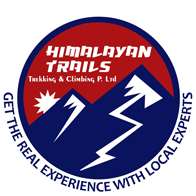
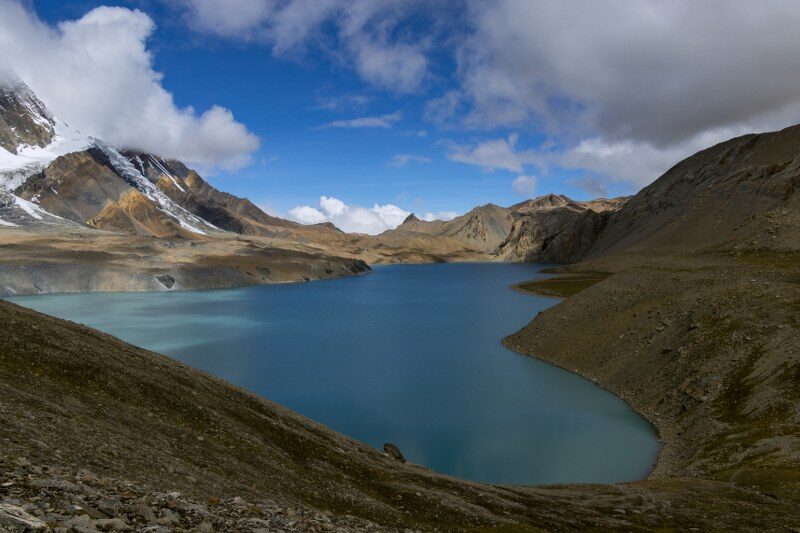
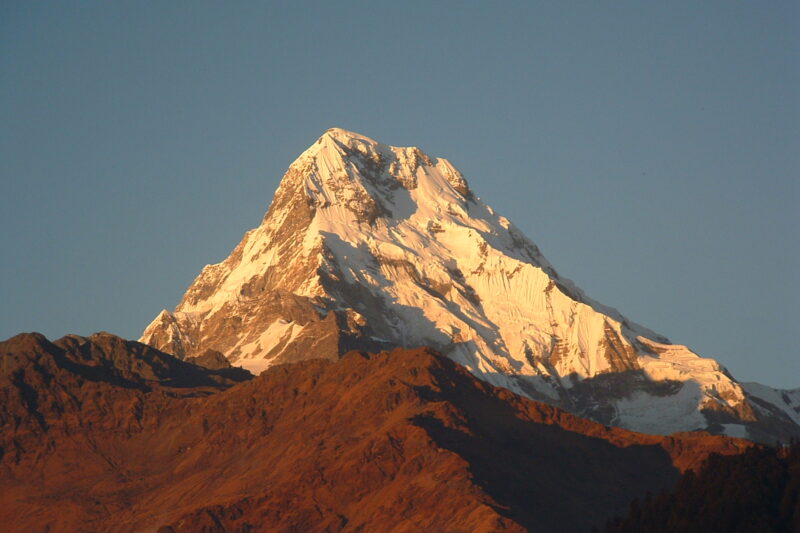
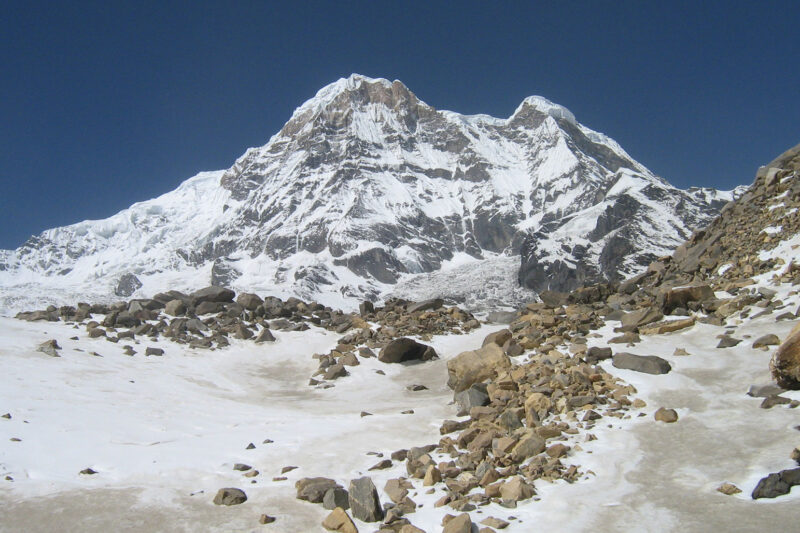
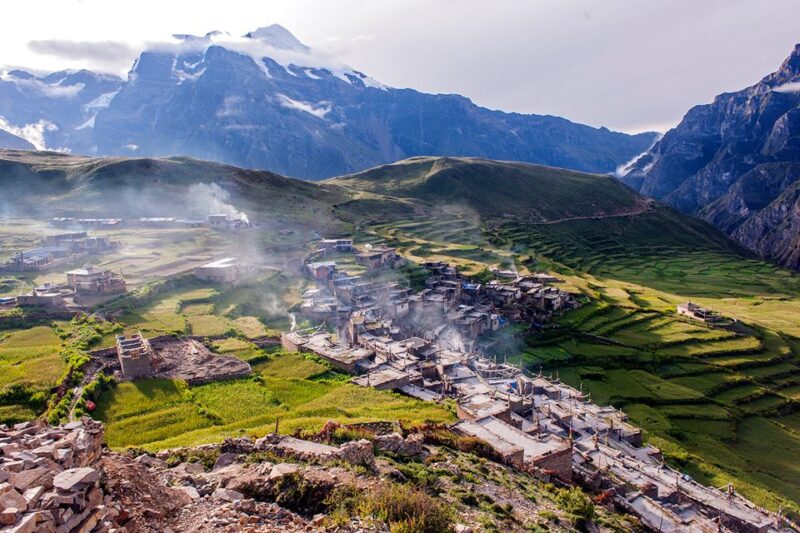
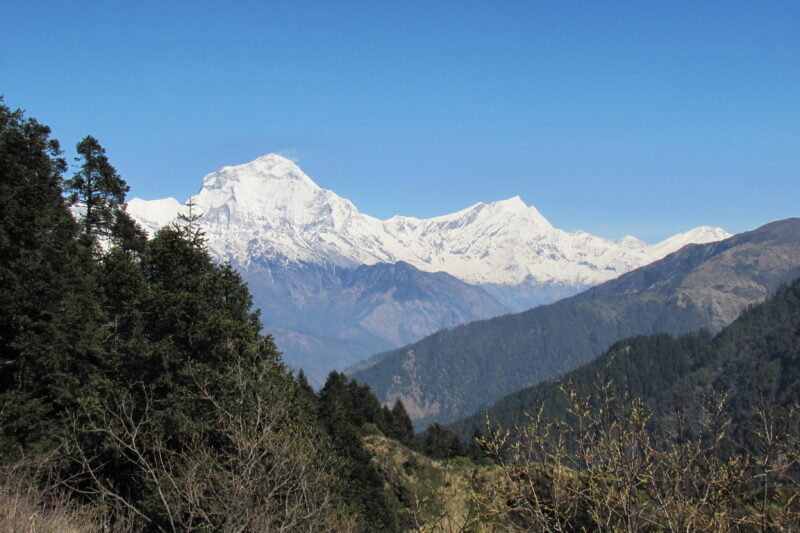
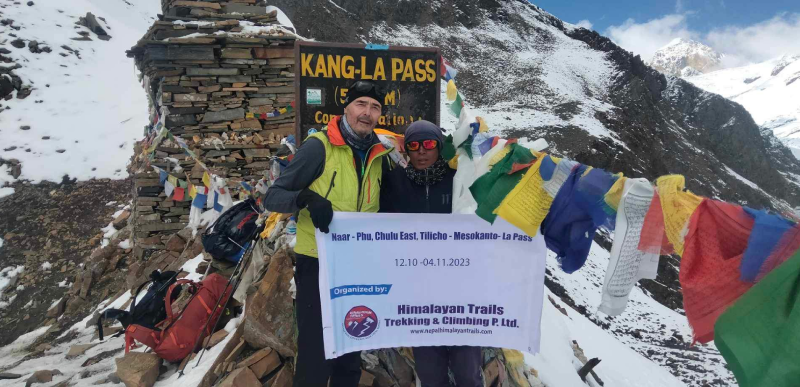




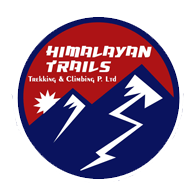
User Reviews & Comments
https://puneriyashrstaffing.com/employer/paypal-casinos-2025-best-online-casinos-accepting-paypal/
online pokies paypal References: https://puneriyashrstaffing.com/employer/paypal-casinos-2025-best-online-casinos-accepting-paypal/
December 29, 2025
達令港
美好的 旅行素材! 感谢激励。
December 27, 2025
Just Casino Australia login
The safety and security of Australian casinos that operate under this license are more based on the company itself, not so much on the license. The Parliament upgraded the country’s online gambling ban through the Interactive Gambling Act of 2016. If they did not, players would quickly find somewhere else to play. Whenever you access one of these casinos, it will immediately scale to the preferred resolution of your device. Before you start playing casino games for real money, it pays to learn about the many game choices. This guide provides essential insights into the top online casinos and navigates the complexities of gambling laws and regulations. With its simple rules and familiar gameplay, blackjack is often the first stop for players exploring online live casinos in Australia. Live casinos online offer a broader choice of games, variants, table limits, and bonus features that you rarely find in physical venues. Any of the real money online casino sites on our list are worth checking out, so dig in and find the one that best fits your style. Many Aussie online casinos host real-time tournaments and leaderboard events. Many Australian online casino sites host Texas Hold’em, Omaha, and even multi-table tournaments where you can compete for real money prizes. Most Australian online casinos are pretty good to use on mobile devices these days, but we want to be selecting the sites that go the extra mile in this regard. The most important thing for online casino Australia sites to offer is a whole lot of games. References: https://blackcoin.co/dolly-casino-australia-complete-guide/
December 27, 2025
online gambling games
Here are my top tips for playing at the best online casinos, you can take them as an expert’s opinion from me to you.RTP matters. The best online casinos prioritise security and comply with Australia’s gambling laws. There are thousands of online gambling games for Australian players to enjoy. I realised that finding the best online casino real money is not about luck. I actually tested a lot more betting sites, which I could not include on my top 10 online casinos list because they did not meet my best Australian online casino list selection criteria. Online.casino, or O.C, is an international guide to gambling, providing the latest news, game guides and honest online casino reviews conducted by real experts. User reviews and expert recommendations can also help identify trustworthy sites. Mobile gambling has surged in popularity due to its accessibility and user-friendly nature. They offer enhanced privacy, low transaction fees, and fast processing times. They can be purchased at various retail locations and used for instant deposits. As with all e-wallets, it might not qualify if you want to claim a bonus so make sure you’ve checked before making a deposit. POLi is an online banking payment service that lets you deposit directly from your bank account. The downside is that it’s mostly a deposit-only method. Their return-to-player (RTP) is generally lower than pokies, but all it takes is one lucky card to hit a 100, 000x win or more.
December 27, 2025
fair go casino login
It’s important to know that deposit bonuses and free spins have rollover requirements. Based on what we’ve seen, every top Australian online casino keeps at least a few dozen blackjack tables. Liked for its low house edge and room for testing strategies and tactics, Blackjack is one of the all-time classic casino games. Jackpot pokies attract lots of players eager for their exciting progressive cash prizes. It is unarguably one of the most trusted licensors, and some of the best Australian online casino operators hold an MGA license. Plus, you also have the choice to play progressive jackpots to win a lot of real money. The casino’s terms and conditions are a commitment to players, forming a contractual agreement between them and the casino. The green bar indicates that the casino site is secure for Aussie players. If we have recommended an Australian online casino, you are guaranteed that the casino is secure. References: https://blackcoin.co/australia-mobile-casinos-apps-the-complete-guide/
December 27, 2025
Fast withdrawal pokies Australia
Play online and unlock exclusive rewards from Australia’s most iconic entertainment resort. Our dedicated support teams are available day and night to assist with any security or responsible gaming concerns. All gaming machines and tables are licensed and audited in compliance with Western Australian regulations. If you are disabling the "Login through Net Banking Nomination" option, it will result in loss of access to the enabled security login feature linked to your net banking login. Regarding the 'Access Denied' issue, please enable the login through Net Banking option in my bank account in your profile section. If no validated account has been selected, the system will show 'access denied' message. No, only one validated bank account can be enabled for net banking login. There are multiple ways to login to the e-Filing portal. The process to login when higher security options are chosen, is also provided in this user manual. There are various methods to login to the e-Filing portal. Thank you taxpayers for filing your ITRs in time! All rooms and suites are non-smoking and offer the latest touch screen technology, 24-hour guest service and access to the resort pools and gymnasium. A 12 seat dining room with adjoining butler’s kitchen allows guests to entertain in exceptional style complete with legendary Crown service. References: https://blackcoin.co/casino-jax-in-depth-review/
December 27, 2025
no deposit bonus codes australia 2026
Less humid with low clouds Overnight temperatures falling to between 13 and 16 with daytime temperatures reaching 24 to 29. Medium chance of showers in the north, slight chance elsewhere. Indoor Humidity76% (Slightly Humid) Hour-by-hour weather for Casino next 7 days Hot with high clouds Times of clouds and sun Rain and drizzle this evening Winds southerly 15 to 25 km/h tending southeasterly in the middle of the day then becoming light in the late evening. Winds southerly 15 to 25 km/h tending southeasterly in the middle of the day then becoming light in the evening. Winds S 15 to 25 km/h tending SE in the middle of the day then becoming light in the late evening. Winds south to southwesterly 15 to 20 km/h turning southeasterly 15 to 25 km/h during the morning then becoming light during the evening. Winds south to southwesterly 15 to 20 km/h tending south to southeasterly 20 to 30 km/h during the morning then becoming light during the evening. References: https://blackcoin.co/just-casino-australia-your-premier-online-casino-destination/
December 26, 2025
RocketPlay latest offers
We’ve put together a helpful guide, complete with a glossary, to help you familiarise yourself with the game! If you favorite a player, they'll have a little heart to remind you how awesome they are! You can now wear a Beskar armor while playing. All of our Backgammon games are 100% free, all day, every day! Whether you want to play with friends or against a "computer" opponent, we’ve got you covered at 24/7 Backgammon. At 24/7 Backgammon, we’ve developed a wide range of Backgammon games for you to choose from. Doing so means that you’re far more likely to repeat them, meaning you’re unable to develop your strategic skills and understanding of the game. Sorry, you were disconnected from the game for too long, we had to remove you from the game so the others could keep playing. If you’re looking for a way to pass the time, sharpen your cognitive abilities, or simply have some fun, you should consider playing Backgammon today. Failing to knock your opponent's checkers off the board. Being aware of the common mistakes that beginners make when playing backgammon makes it easier to avoid similar pitfalls yourself, improving your scores and chances of winning. While part of the gameplay is based on luck (the numbers appearing on the dice), strategy is also key to success. However, you could also learn by watching other, more experienced players. References: https://blackcoin.co/king-johnnie-casino-australia-in-depth-review/
December 26, 2025
beste casinos 10€ gratisbonus 2026
Legen Sie Ihre eigenen Grenzen fest, bevor Sie das erste Spiel spielen. Starke Verschlüsselung, strenges Know Your Customer (KYC) und klare Regeln machen es einfach und sicher, Euro einzuzahlen und abzuheben. Wir zählen nur sichere, verifizierte Aktivitäten und riskantes Verhalten ist nicht erforderlich, um eine Stufe beizubehalten. Wenn Sie lieber für kurze Zeit an Spielautomaten spielen oder den ganzen Abend im Casino auf Ihrem Tablet verbringen möchten, ist das Spielen auf Mobilgeräten im Wolfy Casino perfekt. Das Portfolio umfasst sowohl gewöhnliche Spielautomaten und Jackpot-Slots als auch Tischspiele und ein Live-Casino. Um sicherzustellen, dass sich kein Bot im Wolfy Casino anmeldet, ist es nun noch erforderlich ein Captcha einzugeben. Setzt dazu einfach einen Haken in das Kontrollkästchen. Begebt euch zunächst zur Webseite des Wolfy Casinos, indem ihr einfach auf unseren grünen Button "Bonus holen" klickt. Egal, ob Sie die Einfachheit traditioneller Zahlungsmethoden oder die Schnelligkeit von Kryptowährungen bevorzugen, das Wolfy Casino bietet Ihnen mit seinem Wolfy Casino-konformen Zahlungssystem die passende Lösung. Diese schnellen und benutzerfreundlichen Optionen sorgen dafür, dass Sie sich auf das Spielen Ihrer Lieblingsspiele konzentrieren können, ohne sich um Transaktionen sorgen zu müssen. Die Partnerschaften sorgen natürlich für eine einzigartige Live-Gameauswahl. Selbst ist das Promo-Guthaben nicht abhebbar, sondern lediglich der Gewinn, wobei dieser auf das Fünffache vom erhaltenen Bonus beschränkt ist. Die Krypto-Spieler beginnen mit einem 150%igen Einzahlungsbonus von bis zu 200 Euro ein. User, die sich eine Neukundenprämie sichern wollen, müssen einen Deposit vollziehen. Der Wolfy Bonus hat eine Sticky-Funktion, heißt – er kommt als Absicherung erst zum Zuge, wenn euer Eigengeld bereits aufgebraucht ist. Durch die große Auswahl an Anbietern findet jeder Lieblingsspiele. References: https://online-spielhallen.de/admiral-casino-mobile-app-dein-umfassender-leitfaden/
December 21, 2025
Cocoa Casino mobile
Zwischen 20 Uhr und Mitternacht können Sie Einführungen in die Königsdisziplin Roulette und das legendäre Kartenspiel Blackjack bekommen. Freitags und Samstag bietet das Casino Salzburg kostenlose Spielerklärungen an. In Österreich dürfen Sie ab 18 Jahren eine Spielbank besuchen. Und zwar sollten Herren ein Oberhemd oder ein gepflegtes Poloshirt, ordentliche lange Hosen und geschlossene Schuhe tragen. Bei einem spontanen Casinobesuch kann man sich jedoch auch in der Spielbank ein Sakko oder einen Blazer ausleihen. In den Sommermonaten können Spielpausen auch auf der Terrasse verbracht werden, wo Gäste ebenfalls beispielsweise mit Cocktails bedient werden. Mit geschlossenen Schuhen, einer langen Hose und einem Hemd oder Poloshirt sind Herren in den Räumlichkeiten willkommen. An jedem Dienstag und Freitag finden in dieser Disziplin auch Turniere statt. An insgesamt sieben Tischen kann auch Poker in seinen verschiedenen Ausführungen gespielt werden. Doch auch die bekannten Tischspiele haben eigene Videoableger erhalten. References: https://online-spielhallen.de/netbet-casino-promo-code-ihr-schlussel-zu-exklusiven-vorteilen/
December 20, 2025
Casino Cashback Aktion
Dort können Sie sich sicher fühlen und bedenkenlos höhere Einzahlungen machen und mit höheren Beträgen spielen. Wir weisen aber darauf hin, dass Sie nie bei Anbietern ohne Lizenz spielen dürfen. Wir wollen aber auch vom Schwarzmarkt warnen – denn die skrupelosen Vertreter unter den Anbietern werden sich von einem deutschen Staat nichts sagen lassen. Es spielen auch von staatlicher Seite viele Interessen mit, da es 16 Bundesländer, 16 Parlamente, 16 Ausschüsse und dann noch 16 Gerichte gibt. Bis jetzt kann problemlos mit großen Einzahlungsboni und hunderten von Freispielen geworben werden. Dies ist dazu gedacht, dass die Spieler jeden Spin per Klick selbst ausführen müssen und daher hoffentlich bewusster spielen. Je nachdem, wo die Glücksspiellizenz ausgestellt wurde, gelten unterschiedliche Regeln. Alle Anbieter verfügen über eine gültige Glücksspiellizenz und können als 100% seriös und sicher eingestuft werden. Deutsche Casinos mussten sie alle aus dem Programm nehmen und können nur noch Slots im Portfolio anbieten. References: https://online-spielhallen.de/umfassende-sg-casino-erfahrungen-ein-spielerbericht-nach-10-jahren/
December 20, 2025
🔥 Adult Dating. Go >>> yandex.com/poll/LZW8GPQdJg3xe5C7gt95bD?hs=a8dcef288d1cece9a766e2294b0ca3ba& Message # 1355 🔥
qszgt1
December 16, 2025